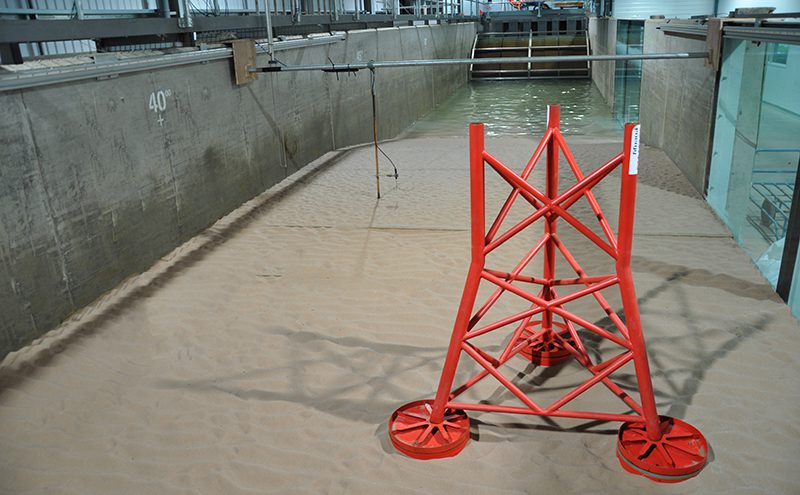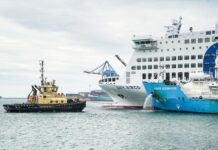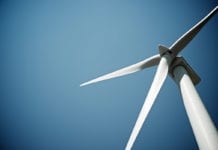
The Borkum Riffgrund 2 offshore wind farm, for which construction has begun in the German North Sea, will have 56 8MW turbines, including 20 next-generation suction bucket foundations. Prior to their deployment, the novel foundations were part of a research project carried out with Ørsted by HR Wallingford in its Oxfordshire Fast Flow Facility.
It is well known that the action of waves and currents can lead to erosion of the seabed around wind turbine foundations. This phenomenon, known as scour, poses a risk to the stability of the foundation and, in extreme cases, has the potential to cause structural failure. Although scour is relatively well understood for traditional monopile foundations, this is not necessarily the case for complex foundation types.
HR Wallingford worked with Ørsted to help to refine the design of the suction bucket foundation , as part of a research project investigating scour effects and the most suitable scour protection for the novel foundation structures.
The ten-month study included physical modelling and complex analysis, looking into the types and extents of scour protection that would be required for the suction bucket foundation to be deployed in the North Sea. Testing was also undertaken to assess the likely impacts of scour protection around the cables required to transport power from offshore wind turbines to onshore transformer stations.
Prof. Richard Whitehouse, Chief Technical Director, Sediment Dynamics, at HR Wallingford, said: “For complex foundations, we currently use a combination of approaches to estimate likely scour, and this introduces a level of uncertainty in the design process. The research with Ørsted has enabled us to develop greater certainty in the prediction of seabed response, and design more efficient foundation solutions. Ultimately this will help to make offshore wind developments more cost-effective, and developments in exposed locations and deeper waters more economically viable.”
Andreas Roulund, Scour Engineer at Ørsted, said: “The testing has improved our knowledge of the scour and scour processes that occur at large, complex foundations. We are moving to the construction phase of Borkum Riffgrund 2 with rigorously tested scour protection designs, which increases our confidence in the performance of the scour protection.”
Harland and Wolff are manufacturing the suction buckets for the foundations, while GeoSea vessel Innovation is handling their installation.
The 450MW wind farm, whose location is some 40km northwest of the island of Borkum, and which is co-owned by Orsted and Global Infrastructure Partners, is expected to be fully commissioned during 2019.






